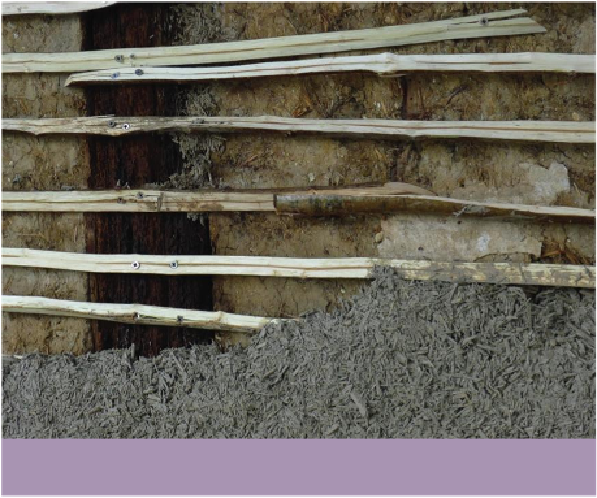Civil Engineering Reference
In-Depth Information
this purpose, and hempcrete would add more insulation than the equivalent thickness of
lime-hemp plaster, for example, while filling any awkward voids or tricky spaces.
Because wattle-and-daub panels tend to degrade on the exterior face (where they have been
covered in cement, which causes more damage than the original exposure), the hempcrete
is most often daubed on to this face, which gives the historic fabric a better level of pro-
tection from the elements than a lime render alone, while preserving the character of the
building (as shown in the photo on the previous page).
Daubed hempcrete over a wattle-and-daub panel, using split hazel poles to
provide a key.
Insulating infill to lath-and-plastered walls in timber-frame
buildings
The use of hempcrete cast up against the back of lath and plaster allows the retention of
these original materials, usually internally to act as a 'permanent shuttering'. The hemp-
crete on the external side of the wall can be finished to replicate the original walls, for
example with weatherboarding, hung tile or slate cladding or a lime render.

Search WWH ::

Custom Search